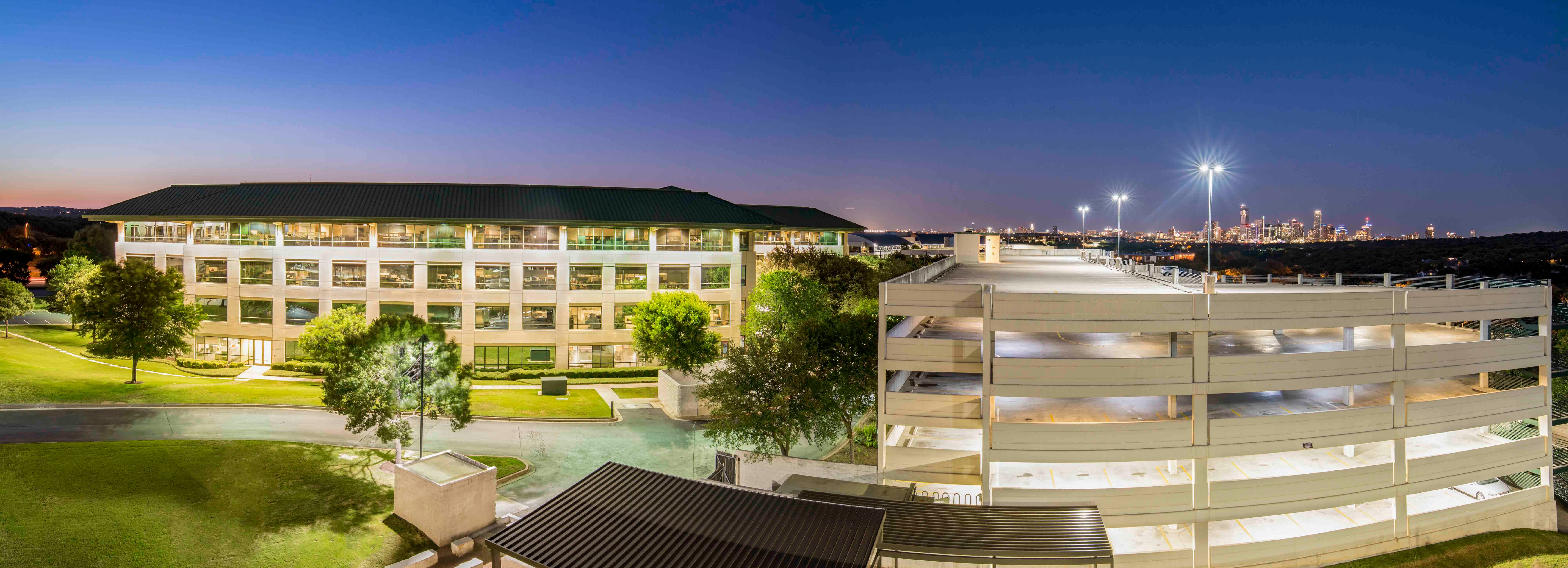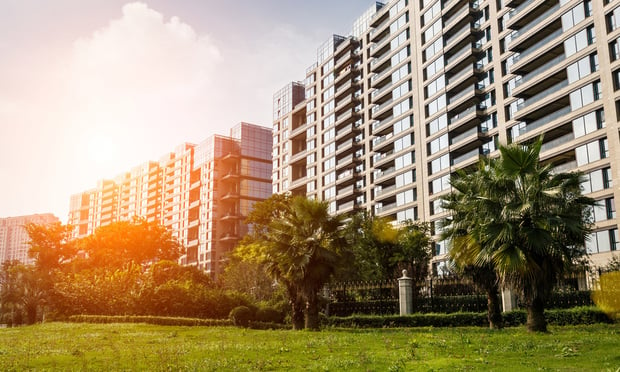 AUSTIN, TX—The growth rate of Austin's office-using employment has trended well above the national average for the past decade. However, the annual growth rate has now dipped below 4% as it moves ever closer to the national rate, according to Savills Studley 's second quarter market report. Slower hiring and tenuous tech investors have reduced demand from the tech industry for Austin office space. However, rental rates remain at all-time highs and availability rates remain low given the lack of additional supply into the market. John Scoblick , corporate managing director at Savills Studley, tells GlobeSt.com: “In the first quarter, there was increased availability of space but this was an anomaly. There are increasing rates while vacancy is still low. Construction projects are getting filled before completion. Everything is still hitting on all cylinders. However, even though we have good talent from the University of Texas and our low cost of living is attractive, the talent pool is getting thin.” Getting to the stats–following a slight uptick in the first quarter, the region's class-A rate fell a full percentage point to 16.9% in the second quarter–its lowest mark since early 2013. The class-A availability rate in the CBD decreased to 15.7% in the quarter and has plunged by 4.3% year-on-year. Regional deal volume totaled 6.2 million square feet in the last four quarters, down from the 6.5 million square feet leased in the prior four quarters and below the 6.6 million square feet annual average. Rental rates were nearly flat, inching up by merely 0.1% to $31.53 in the second quarter. Class-A asking rent fell by 0.2% to $36.16, but has jumped by 4.8% year-on-year. Class-A average rent in the CBD rose by 0.8% quarter-on-quarter to $45.38. "There is a growing sense that tech demand for both talent and office space may be near or already past its peak level, particularly as investors have become more selective in this climate. Even so, space options remain limited," says Tim Wingfield of Savills Studley research, echoing the sentiments of Scoblick. Companies in Austin are indeed faced with several challenges from the tenant and the operational points of view, according to Savills Studley. First, the supply and affordability of office space remains tight. Average rent for Austin has climbed 4.1% from $30.28 to $31.53 during the past year. Class-A rent underwent a slightly steeper 4.8% jump, from $34.52 to $36.16, during the past 12 months. In the past year, Austin's office availability has inched down from 15% to 14.8% among all classes while dropping more sharply from 19.6% to 16.9% within the class-A subset of buildings. Second, despite the booming population of the market and the state, the available talent pool remains quite thin. According to a June 2016 report from the US Bureau of Labor Statistics , the overall unemployment rate for the Austin metro area is 2.9%, which is slightly down year-over-year from 3%. Based on a report from Forbes , Austin netted 4.2% new jobs during the past 12 months. Third, operational expenses, such as salaries, remain high. According to Forbes, household income grew 2.4% year-over-year to a median average of $63,572. At the same time, investors remain cautious and are taking a tougher view in valuations of newer tech ventures, says Savills Studley. Less-established tech companies are having the most difficulty raising capital and a few tech firms have put planned product rollouts or other initiatives on hold while others have cut staff. The ability of smaller startups to attract top tech talent from mature tech firms is also taking a hit as employees are becoming less likely to jump ship at the prospect of potential–rather than actual–stock stakes. The caution shown by the tech industry has now rippled through the Austin office market, says Savills Studley. Demand for office space has lost a step as leasing has slowed. Tenants have leased 6.2 million square feet during the last four quarters, the weakest four-quarter total since 2010. The number of headline leases of more than 50,000 square feet has dropped off. In the absence of high-growth startups within the talent-rich downtown market, renewals and consolidations by mature tech firms in the popular suburban submarkets of North, Northwest, and Southwest Austin comprised much of the lease activity in Austin. IBM 's 200,000 square feet lease renewal at 11501 Burnet was the only transaction of more than 100,000 square feet, but the lease itself likely signifies future downsizing–IBM extended on only a portion of the Broadmoor complex that the company previously sold to Brandywine in 2015. Net absorption for the Austin office market slipped into negative territory for the first time since 2012 with -317,162 square feet of net absorption. Should negative net absorption trend for multiple quarters in the Austin market, then the upward rally of rents and occupancy may finally start to soften. The market has recorded a drop-off in the number of larger leases, but a few mid-sized leases were signed in the second quarter. These new deals showed continued mobility in the market, whereas a complete retreat to renewals would indicate a market-wide pullback. Even with the pullback in activity, the supply of large contiguous blocks of available office space remains elusive. With seven deals of 50,000 square feet or more already signed in 2016 to date, the proportion of large opportunities remained scarce.
AUSTIN, TX—The growth rate of Austin's office-using employment has trended well above the national average for the past decade. However, the annual growth rate has now dipped below 4% as it moves ever closer to the national rate, according to Savills Studley 's second quarter market report. Slower hiring and tenuous tech investors have reduced demand from the tech industry for Austin office space. However, rental rates remain at all-time highs and availability rates remain low given the lack of additional supply into the market. John Scoblick , corporate managing director at Savills Studley, tells GlobeSt.com: “In the first quarter, there was increased availability of space but this was an anomaly. There are increasing rates while vacancy is still low. Construction projects are getting filled before completion. Everything is still hitting on all cylinders. However, even though we have good talent from the University of Texas and our low cost of living is attractive, the talent pool is getting thin.” Getting to the stats–following a slight uptick in the first quarter, the region's class-A rate fell a full percentage point to 16.9% in the second quarter–its lowest mark since early 2013. The class-A availability rate in the CBD decreased to 15.7% in the quarter and has plunged by 4.3% year-on-year. Regional deal volume totaled 6.2 million square feet in the last four quarters, down from the 6.5 million square feet leased in the prior four quarters and below the 6.6 million square feet annual average. Rental rates were nearly flat, inching up by merely 0.1% to $31.53 in the second quarter. Class-A asking rent fell by 0.2% to $36.16, but has jumped by 4.8% year-on-year. Class-A average rent in the CBD rose by 0.8% quarter-on-quarter to $45.38. "There is a growing sense that tech demand for both talent and office space may be near or already past its peak level, particularly as investors have become more selective in this climate. Even so, space options remain limited," says Tim Wingfield of Savills Studley research, echoing the sentiments of Scoblick. Companies in Austin are indeed faced with several challenges from the tenant and the operational points of view, according to Savills Studley. First, the supply and affordability of office space remains tight. Average rent for Austin has climbed 4.1% from $30.28 to $31.53 during the past year. Class-A rent underwent a slightly steeper 4.8% jump, from $34.52 to $36.16, during the past 12 months. In the past year, Austin's office availability has inched down from 15% to 14.8% among all classes while dropping more sharply from 19.6% to 16.9% within the class-A subset of buildings. Second, despite the booming population of the market and the state, the available talent pool remains quite thin. According to a June 2016 report from the US Bureau of Labor Statistics , the overall unemployment rate for the Austin metro area is 2.9%, which is slightly down year-over-year from 3%. Based on a report from Forbes , Austin netted 4.2% new jobs during the past 12 months. Third, operational expenses, such as salaries, remain high. According to Forbes, household income grew 2.4% year-over-year to a median average of $63,572. At the same time, investors remain cautious and are taking a tougher view in valuations of newer tech ventures, says Savills Studley. Less-established tech companies are having the most difficulty raising capital and a few tech firms have put planned product rollouts or other initiatives on hold while others have cut staff. The ability of smaller startups to attract top tech talent from mature tech firms is also taking a hit as employees are becoming less likely to jump ship at the prospect of potential–rather than actual–stock stakes. The caution shown by the tech industry has now rippled through the Austin office market, says Savills Studley. Demand for office space has lost a step as leasing has slowed. Tenants have leased 6.2 million square feet during the last four quarters, the weakest four-quarter total since 2010. The number of headline leases of more than 50,000 square feet has dropped off. In the absence of high-growth startups within the talent-rich downtown market, renewals and consolidations by mature tech firms in the popular suburban submarkets of North, Northwest, and Southwest Austin comprised much of the lease activity in Austin. IBM 's 200,000 square feet lease renewal at 11501 Burnet was the only transaction of more than 100,000 square feet, but the lease itself likely signifies future downsizing–IBM extended on only a portion of the Broadmoor complex that the company previously sold to Brandywine in 2015. Net absorption for the Austin office market slipped into negative territory for the first time since 2012 with -317,162 square feet of net absorption. Should negative net absorption trend for multiple quarters in the Austin market, then the upward rally of rents and occupancy may finally start to soften. The market has recorded a drop-off in the number of larger leases, but a few mid-sized leases were signed in the second quarter. These new deals showed continued mobility in the market, whereas a complete retreat to renewals would indicate a market-wide pullback. Even with the pullback in activity, the supply of large contiguous blocks of available office space remains elusive. With seven deals of 50,000 square feet or more already signed in 2016 to date, the proportion of large opportunities remained scarce.  AUSTIN, TX—The growth rate of Austin's office-using employment has trended well above the national average for the past decade. However, the annual growth rate has now dipped below 4% as it moves ever closer to the national rate, according to Savills Studley 's second quarter market report. Slower hiring and tenuous tech investors have reduced demand from the tech industry for Austin office space. However, rental rates remain at all-time highs and availability rates remain low given the lack of additional supply into the market. John Scoblick , corporate managing director at Savills Studley, tells GlobeSt.com: “In the first quarter, there was increased availability of space but this was an anomaly. There are increasing rates while vacancy is still low. Construction projects are getting filled before completion. Everything is still hitting on all cylinders. However, even though we have good talent from the University of Texas and our low cost of living is attractive, the talent pool is getting thin.” Getting to the stats–following a slight uptick in the first quarter, the region's class-A rate fell a full percentage point to 16.9% in the second quarter–its lowest mark since early 2013. The class-A availability rate in the CBD decreased to 15.7% in the quarter and has plunged by 4.3% year-on-year. Regional deal volume totaled 6.2 million square feet in the last four quarters, down from the 6.5 million square feet leased in the prior four quarters and below the 6.6 million square feet annual average. Rental rates were nearly flat, inching up by merely 0.1% to $31.53 in the second quarter. Class-A asking rent fell by 0.2% to $36.16, but has jumped by 4.8% year-on-year. Class-A average rent in the CBD rose by 0.8% quarter-on-quarter to $45.38. "There is a growing sense that tech demand for both talent and office space may be near or already past its peak level, particularly as investors have become more selective in this climate. Even so, space options remain limited," says Tim Wingfield of Savills Studley research, echoing the sentiments of Scoblick. Companies in Austin are indeed faced with several challenges from the tenant and the operational points of view, according to Savills Studley. First, the supply and affordability of office space remains tight. Average rent for Austin has climbed 4.1% from $30.28 to $31.53 during the past year. Class-A rent underwent a slightly steeper 4.8% jump, from $34.52 to $36.16, during the past 12 months. In the past year, Austin's office availability has inched down from 15% to 14.8% among all classes while dropping more sharply from 19.6% to 16.9% within the class-A subset of buildings. Second, despite the booming population of the market and the state, the available talent pool remains quite thin. According to a June 2016 report from the US Bureau of Labor Statistics , the overall unemployment rate for the Austin metro area is 2.9%, which is slightly down year-over-year from 3%. Based on a report from Forbes , Austin netted 4.2% new jobs during the past 12 months. Third, operational expenses, such as salaries, remain high. According to Forbes, household income grew 2.4% year-over-year to a median average of $63,572. At the same time, investors remain cautious and are taking a tougher view in valuations of newer tech ventures, says Savills Studley. Less-established tech companies are having the most difficulty raising capital and a few tech firms have put planned product rollouts or other initiatives on hold while others have cut staff. The ability of smaller startups to attract top tech talent from mature tech firms is also taking a hit as employees are becoming less likely to jump ship at the prospect of potential–rather than actual–stock stakes. The caution shown by the tech industry has now rippled through the Austin office market, says Savills Studley. Demand for office space has lost a step as leasing has slowed. Tenants have leased 6.2 million square feet during the last four quarters, the weakest four-quarter total since 2010. The number of headline leases of more than 50,000 square feet has dropped off. In the absence of high-growth startups within the talent-rich downtown market, renewals and consolidations by mature tech firms in the popular suburban submarkets of North, Northwest, and Southwest Austin comprised much of the lease activity in Austin. IBM 's 200,000 square feet lease renewal at 11501 Burnet was the only transaction of more than 100,000 square feet, but the lease itself likely signifies future downsizing–IBM extended on only a portion of the Broadmoor complex that the company previously sold to Brandywine in 2015. Net absorption for the Austin office market slipped into negative territory for the first time since 2012 with -317,162 square feet of net absorption. Should negative net absorption trend for multiple quarters in the Austin market, then the upward rally of rents and occupancy may finally start to soften. The market has recorded a drop-off in the number of larger leases, but a few mid-sized leases were signed in the second quarter. These new deals showed continued mobility in the market, whereas a complete retreat to renewals would indicate a market-wide pullback. Even with the pullback in activity, the supply of large contiguous blocks of available office space remains elusive. With seven deals of 50,000 square feet or more already signed in 2016 to date, the proportion of large opportunities remained scarce.
AUSTIN, TX—The growth rate of Austin's office-using employment has trended well above the national average for the past decade. However, the annual growth rate has now dipped below 4% as it moves ever closer to the national rate, according to Savills Studley 's second quarter market report. Slower hiring and tenuous tech investors have reduced demand from the tech industry for Austin office space. However, rental rates remain at all-time highs and availability rates remain low given the lack of additional supply into the market. John Scoblick , corporate managing director at Savills Studley, tells GlobeSt.com: “In the first quarter, there was increased availability of space but this was an anomaly. There are increasing rates while vacancy is still low. Construction projects are getting filled before completion. Everything is still hitting on all cylinders. However, even though we have good talent from the University of Texas and our low cost of living is attractive, the talent pool is getting thin.” Getting to the stats–following a slight uptick in the first quarter, the region's class-A rate fell a full percentage point to 16.9% in the second quarter–its lowest mark since early 2013. The class-A availability rate in the CBD decreased to 15.7% in the quarter and has plunged by 4.3% year-on-year. Regional deal volume totaled 6.2 million square feet in the last four quarters, down from the 6.5 million square feet leased in the prior four quarters and below the 6.6 million square feet annual average. Rental rates were nearly flat, inching up by merely 0.1% to $31.53 in the second quarter. Class-A asking rent fell by 0.2% to $36.16, but has jumped by 4.8% year-on-year. Class-A average rent in the CBD rose by 0.8% quarter-on-quarter to $45.38. "There is a growing sense that tech demand for both talent and office space may be near or already past its peak level, particularly as investors have become more selective in this climate. Even so, space options remain limited," says Tim Wingfield of Savills Studley research, echoing the sentiments of Scoblick. Companies in Austin are indeed faced with several challenges from the tenant and the operational points of view, according to Savills Studley. First, the supply and affordability of office space remains tight. Average rent for Austin has climbed 4.1% from $30.28 to $31.53 during the past year. Class-A rent underwent a slightly steeper 4.8% jump, from $34.52 to $36.16, during the past 12 months. In the past year, Austin's office availability has inched down from 15% to 14.8% among all classes while dropping more sharply from 19.6% to 16.9% within the class-A subset of buildings. Second, despite the booming population of the market and the state, the available talent pool remains quite thin. According to a June 2016 report from the US Bureau of Labor Statistics , the overall unemployment rate for the Austin metro area is 2.9%, which is slightly down year-over-year from 3%. Based on a report from Forbes , Austin netted 4.2% new jobs during the past 12 months. Third, operational expenses, such as salaries, remain high. According to Forbes, household income grew 2.4% year-over-year to a median average of $63,572. At the same time, investors remain cautious and are taking a tougher view in valuations of newer tech ventures, says Savills Studley. Less-established tech companies are having the most difficulty raising capital and a few tech firms have put planned product rollouts or other initiatives on hold while others have cut staff. The ability of smaller startups to attract top tech talent from mature tech firms is also taking a hit as employees are becoming less likely to jump ship at the prospect of potential–rather than actual–stock stakes. The caution shown by the tech industry has now rippled through the Austin office market, says Savills Studley. Demand for office space has lost a step as leasing has slowed. Tenants have leased 6.2 million square feet during the last four quarters, the weakest four-quarter total since 2010. The number of headline leases of more than 50,000 square feet has dropped off. In the absence of high-growth startups within the talent-rich downtown market, renewals and consolidations by mature tech firms in the popular suburban submarkets of North, Northwest, and Southwest Austin comprised much of the lease activity in Austin. IBM 's 200,000 square feet lease renewal at 11501 Burnet was the only transaction of more than 100,000 square feet, but the lease itself likely signifies future downsizing–IBM extended on only a portion of the Broadmoor complex that the company previously sold to Brandywine in 2015. Net absorption for the Austin office market slipped into negative territory for the first time since 2012 with -317,162 square feet of net absorption. Should negative net absorption trend for multiple quarters in the Austin market, then the upward rally of rents and occupancy may finally start to soften. The market has recorded a drop-off in the number of larger leases, but a few mid-sized leases were signed in the second quarter. These new deals showed continued mobility in the market, whereas a complete retreat to renewals would indicate a market-wide pullback. Even with the pullback in activity, the supply of large contiguous blocks of available office space remains elusive. With seven deals of 50,000 square feet or more already signed in 2016 to date, the proportion of large opportunities remained scarce.
Want to continue reading?
Become a Free ALM Digital Reader.
Once you are an ALM Digital Member, you’ll receive:
- Breaking commercial real estate news and analysis, on-site and via our newsletters and custom alerts
- Educational webcasts, white papers, and ebooks from industry thought leaders
- Critical coverage of the property casualty insurance and financial advisory markets on our other ALM sites, PropertyCasualty360 and ThinkAdvisor
Already have an account? Sign In Now
*May exclude premium content© 2024 ALM Global, LLC, All Rights Reserved. Request academic re-use from www.copyright.com. All other uses, submit a request to [email protected]. For more information visit Asset & Logo Licensing.








